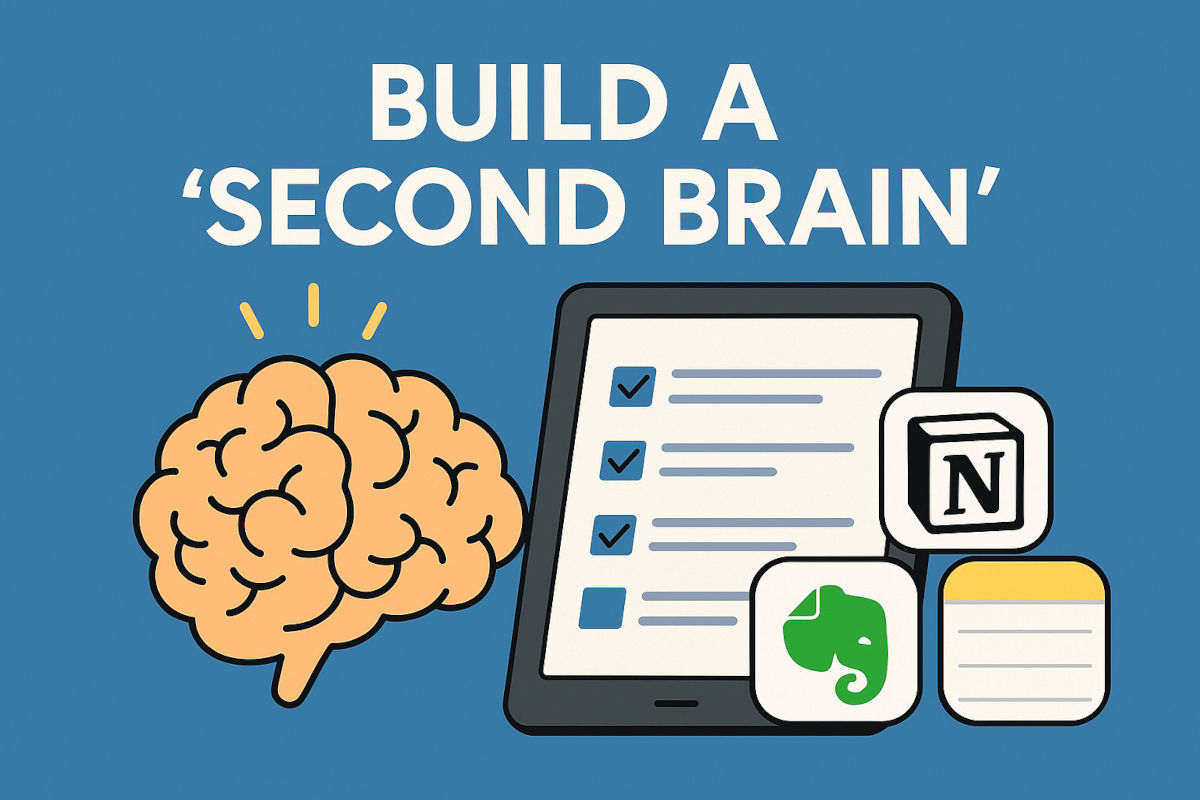When picking a new pope, the Vatican cuts off the outside world. Signal jammers block phones. Anti-spy tech sweeps every corner. Plus, Hailey from Ohio heard a stranger talking to her baby through a Wi-Fi nanny cam. And tariffs might make your next iPhone cost more.
Outsource your memory, keep your genius

Your brain is meat. Beautiful, magical meat.
But it loses things. Important things like “brilliant 4 a.m. business idea” slip into the gray matter of the most sophisticated organ on the planet.
That’s why the smartest people I know (including me!) have a “second brain.” A digital vault that catches ideas, plans, reminders and projects before they vanish into the void.
If you’re still trying to keep it all in your head, it’s time for an upgrade. Here’s how second-brain apps like Notion, Evernote and Apple Notes can help you work smarter, not harder.
🧠 Step 1: Pick your tool
- Apple Notes (free and probably already on your iPhone/Mac): Fast, simple, searchable. It’s the one I use.
- Evernote: Great for organizing notes, web clippings, PDFs and images.
- Notion: For power users who want to build an entire “command center” for their brain. I’m talking about tasks, notes, databases, even project dashboards.
👉 Only rule: Pick one you’ll actually open and use daily. Don’t overcomplicate it.
🖊️ Step 2: Dump everything
Scribble half-formed shower thoughts. Save quotes, links, screenshots of tweets you laughed at too hard. Whatever needs saving, get it in there before you forget it.
Save quotes, book ideas, article links or random tech tips you want to try later. Snap a picture of handwritten notes, and drop them into your app. Dictate quick thoughts using voice-to-text if you’re driving or walking. You get the gist.
👉 Tip: Don’t overorganize. The goal is to catch ideas, not perfect them.
✅ Step 3: Build simple systems
Wi-Fi slow? It’s probably this

You pay for high-speed internet, but your current connection is slower than your mom who took nine months to come up with a good joke. Something’s off, and no, it’s not Mercury in retrograde (this time).
Enter: DNS.
How the Vatican locks down the conclave — May 3rd, Hour 1
AirPlay or MalwarePlay: Apple patched its side of the AirPlay saga (paywall link), but tens of millions of third-party speakers, TVs and, yes, cars are still left wide-open thanks to bugs in Apple’s developer tools. A hacker might just need Wi-Fi access to hijack everything from the Bose speaker to the family sedan. Check your devices for any updates.
🖨️ Print with your voice: Got a 3rd-gen Echo or newer? You can link it to your printer. Make sure both are on the same Wi-Fi network and say, “Alexa, discover my printer.” In the Alexa app, it’s Add (+) > Device > Printer to set it up manually. This only works on some models. Click here to see what’s compatible.
We may earn a commission from purchases, but our recommendations are always objective.
Sluggish internet? Don’t ignore it. Someone could be freeloading off your Wi-Fi. Click here for my tips to check who’s connected to your network. If you spot a gadget you don’t recognize, it could be a Wi-Fi moocher. Your signal isn’t a community service.
⚡️ 3-second tech genius: Going overseas? Use WhatsApp or Signal for free messaging over Wi-Fi, and skip roaming fees entirely.
Safe Wi-Fi anywhere: Using public Wi-Fi is risky no matter where you go. It doesn’t make a difference if you stay at a five-star luxury hotel, have lunch at your hometown diner or you’re at the airport. The easy way to protect yourself? Turn on a VPN.
Viral Wi-Fi trick: Fold a sheet of aluminum foil into a curved shape and prop it behind your router’s antennas. This DIY hack can help boost your signal and improve coverage in those pesky dead zones. Cheap, fast and effective.
⬇️ The drop zone: Got a new Mac, and AirDrop isn’t working? It’s not on by default. Open Finder > AirDrop. If your Bluetooth or Wi-Fi is turned off, press that button to turn it on. When it’s blue, it’s ready. Then set Allow me to be discovered by to either Contacts Only or Everyone.
✍️ ABC = Always Be Selling: I know that’s not a C. Adding a call to action turns your email signature into marketing gold. It can be a link, a special offer or anything else you want to promote. Here’s how to change them. But don’t stop there. Put CTAs in your social media bio, website footer and even your store’s Wi-Fi name.
Staying in is the new going out
Friday night celebration? Nah. We’ve got food delivery and streaming. You can thank Wi-Fi for that.
The $1 Wi-Fi trick blowing up online
Weak signal? Grab some foil. This kitchen hack might actually boost your Wi-Fi.
⏩ The fast lane: Slow Wi-Fi? Place your mesh nodes halfway between your router and dead zones. This will help boost your signal. Pro tip: Connect to the 5GHz band instead of the 2.4GHz band. You’ll notice the difference.
⚡️ 3-second tech genius: Streaming on your phone? Flip on Wi-Fi Assist (iPhone) or Adaptive Connectivity (Android) to prevent buffering when Wi-Fi drops.
🛜 Sluggish internet? Don’t ignore it. Someone could be freeloading off your Wi-Fi. Click here for my tips to check who’s connected to your network. If you spot a gadget you don’t recognize, it could be a Wi-Fi moocher. Your signal isn’t a community service.
Safe Wi-Fi anywhere: Using public Wi-Fi is risky no matter where you go. It doesn’t make a difference if you stay at a five-star luxury hotel, have lunch at your hometown diner or you’re at the airport. The easy way to protect yourself? Turn on a VPN.
Don’t fall for the travel tech panic
Public Wi-Fi horror stories make great headlines, but here’s what really puts your info at risk.
📺 Better Call Saul moment: Russell Kort is basically a real-life Chuck McGill. He claims to have electromagnetic hypersensitivity, which causes headaches, brain fog and blackouts around Wi-Fi. Is it real? Well, it’s not an official medical diagnosis. But it’s kinda strange that there’s barely any research on it. Rumor has it this man would physically explode in a Starbucks.
🛑 Keep out hackers: Hide your SSID (network name) so randos don’t see your Wi-Fi. Find your router’s IP address (usually on a sticker at the bottom) and type it into your browser. Then, Login > Wireless Settings > Disable SSID broadcast.